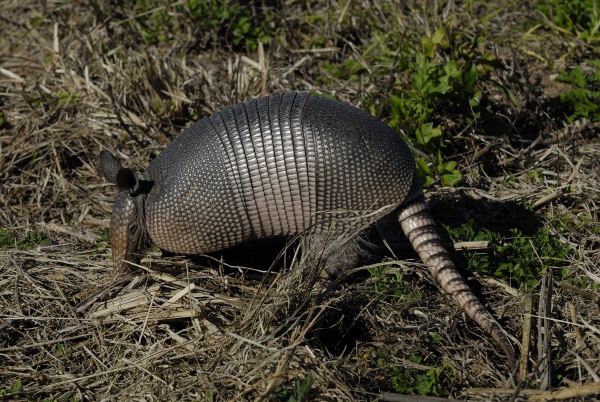Facts About Nine-banded armadillo
The nine-banded armadillo, also known as the long-nosed armadillo, is a medium-sized mammal that roams across North, Central, and South America. It is the most widespread of all armadillo species. Originating in South America, its ancestors migrated to North America via the Isthmus of Panama during the Great American Interchange. This predominantly nocturnal and solitary creature inhabits diverse environments, including rainforests, grasslands, and scrublands, where it primarily feeds on insects such as ants and termites.
Since the late 19th century, the nine-banded armadillo has steadily expanded its range within the United States, progressing northward and eastward. This expansion is attributed to several factors: a scarcity of natural predators, high reproductive rates, and human activities. Now established in multiple states, the armadillo continues its northward movement, although harsh winters might ultimately restrict its spread due to its poor tolerance for cold temperatures.
These armadillos are insectivores that forage by digging in soil and leaf litter to uncover insects. Their diet also includes amphibians, small reptiles, bird eggs, and carrion. They possess a protective shell made of dermal scutes and keratinized scales, and their claws are excellently adapted for digging. Interestingly, when startled, they can leap, and they are capable of floating across rivers by inflating their intestines.
Solitary and nocturnal, nine-banded armadillos build burrows for shelter and mark their territories with scent glands. They reproduce annually, with females giving birth to quadruplets following a four-month gestation period. The young remain with their mother for several months before becoming independent. These armadillos reach sexual maturity at one year and can reproduce throughout their 12 to 15-year lifespan.
Though their foraging can cause some damage to plant roots, nine-banded armadillos play a crucial ecological role by creating habitats for other species. They are occasionally hunted for their meat, used in medical research due to their susceptibility to leprosy, and even participate in armadillo racing in Texas. During the Great Depression, they faced hunting pressure and are considered pests in some regions.

 Guatemala
Guatemala